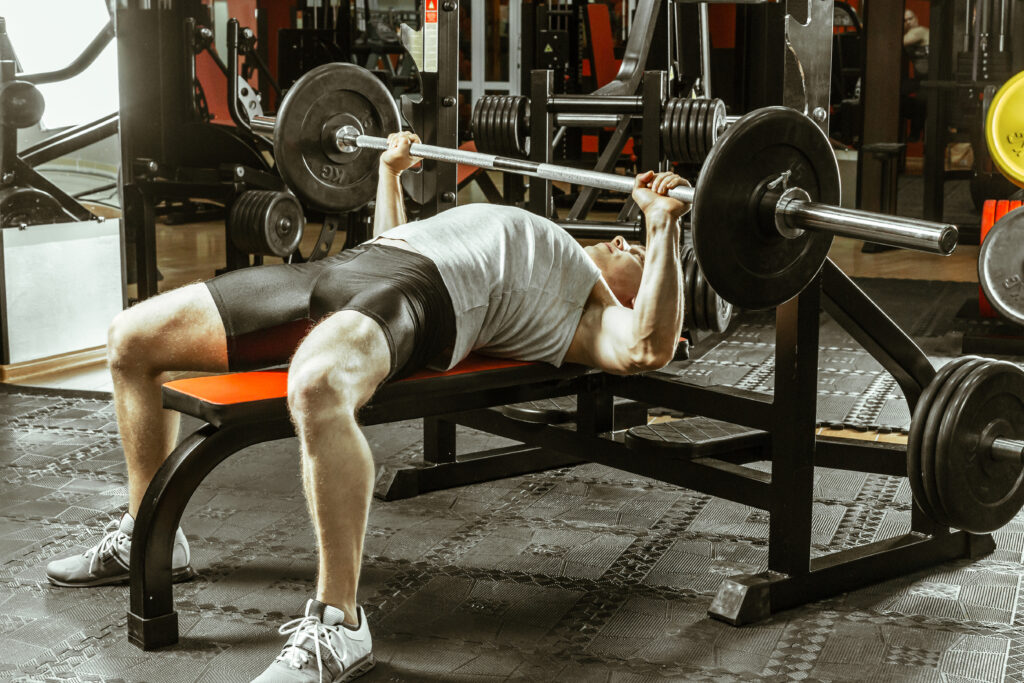Avoid Shoulder Injuries: 5 Pro Tips for Bench Pressing Safely

The bench press is one of the most popular exercises for building chest, shoulder, and arm strength. However, improper form or overloading can lead to shoulder injuries, a common problem for gym-goers across Bengaluru and India. From rotator cuff strains to shoulder impingement, these injuries can not only limit your workout performance but also sideline you for months if not addressed properly.
At BSI Physiotherapy Bangalore, we help athletes, fitness enthusiasts, and beginners implement safe bench press techniques and shoulder injury prevention strategies to enhance strength while protecting their joints. In this blog, we will discuss 5 pro tips for bench pressing safely, along with actionable advice to reduce shoulder pain and improve shoulder health.
1. Maintain Proper Grip Width
A major contributor to shoulder pain during bench press is incorrect hand placement. Using a grip that is too wide increases stress on the shoulder joints, particularly the rotator cuff, while a narrow grip shifts undue pressure to the wrists and elbows.
For safe bench pressing:
- Keep your hands slightly wider than shoulder-width apart.
- Ensure your wrists stay neutral and aligned with the elbows.
- Avoid flaring elbows out excessively, which increases the risk of impingement.
By maintaining proper grip width, you not only protect your shoulders but also maximize force production, helping you lift more efficiently.
2. Retract and Depress Your Shoulder Blades
One of the most overlooked tips for shoulder injury prevention in Bengaluru gyms is scapular stabilization. Retracting (pulling together) and depressing (pulling down) your shoulder blades before unracking the bar provides a stable base for pressing movements.
Why it works:
- Reduces strain on the rotator cuff
- Improves bench press mechanics
- Prevents excessive internal rotation of the shoulders
At BSI Physiotherapy, we guide our patients on scapular activation drills that strengthen stabilizing muscles, significantly lowering the risk of injury.
3. Control Your Range of Motion
Bench pressing with a full, uncontrolled range of motion can place unnecessary stress on your shoulder joints. Lowering the bar too high on your chest, or excessively flaring your elbows, increases the risk of impingement.
Safe ROM tips:
- Lower the bar to the mid-chest area, just below the nipple line.
- Keep your elbows at about a 45-degree angle relative to your torso.
- Focus on controlled movement rather than lifting heavy with poor form.
Controlled ROM not only prevents injury but also improves chest activation and overall lifting efficiency.
4. Gradually Increase Load
Many shoulder injuries occur when lifters attempt to lift more than their body or technique can handle. Progressive overload is essential for strength gains, but sudden jumps in weight compromise form and increase injury risk.
Pro tips for gradual loading:
- Increase weights incrementally based on current capacity.
- Ensure proper form and control before adding heavier loads.
- Use spotters or safety equipment to prevent accidents.
At BSI Physiotherapy Bangalore, we recommend combining bench press training with targeted physiotherapy exercises for shoulder stability, especially for those recovering from previous injuries.
5. Incorporate Shoulder Mobility and Recovery Exercises
A strong and mobile shoulder joint is less likely to get injured. Many gym-goers in India overlook prehabilitation and post-workout shoulder recovery, which are essential to safe lifting.
Recommended exercises:
- Band pull-aparts to strengthen posterior shoulder muscles
- External rotations for rotator cuff stability
- Thoracic spine mobility drills to improve shoulder mechanics
- Stretching and foam rolling to reduce tightness
BSI Physiotherapy also emphasizes post-workout recovery strategies for shoulder health, including proper warm-up, cool-down, and physiotherapy-guided exercises. This approach minimizes pain and promotes long-term joint resilience.
Common Mistakes That Cause Shoulder Pain During Bench Press
Even with tips in place, mistakes happen. Some common errors leading to bench press shoulder injuries include:
- Flaring elbows too wide
- Using momentum instead of controlled lifts
- Ignoring pain signals and overtraining
- Lifting excessively heavy weights without proper technique
- Neglecting rotator cuff and scapular stabilization exercises
Avoiding these mistakes can save you months of recovery and help maintain consistent gains.
Why Choose BSI Physiotherapy Bangalore for Shoulder Injury Prevention
If you’re in Bengaluru or nearby, BSI Physiotherapy offers expert guidance on safe strength training techniques, including:
- Personalized assessments to identify shoulder weakness or imbalance
- Evidence-based exercise programs for shoulder stability and mobility
- Recovery protocols to prevent overuse injuries
- Physiotherapy for shoulder injuries in case of pain or post-injury rehab
Our team works closely with athletes, gym-goers, and beginners to ensure safe bench press form, reduce shoulder pain, and enhance overall upper body performance.
Conclusion
Bench pressing can be an incredibly effective exercise for building strength, but it must be performed with care to protect your shoulders. Following these 5 pro tips for bench pressing safely—maintaining proper grip width, retracting shoulder blades, controlling ROM, gradually increasing load, and improving shoulder mobility—can drastically reduce the risk of injury.
If you are experiencing shoulder pain during bench press or other lifting exercises, consult a physiotherapist in Bengaluru to get a tailored program. By combining correct form, mobility training, and gradual load progression, you can enjoy pain-free strength training and achieve your fitness goals safely.
